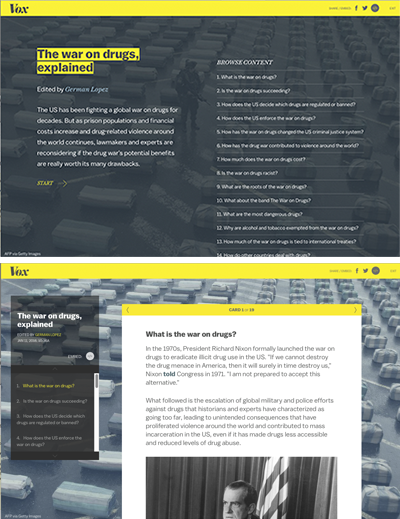Education > Introduction to Design
UX/UI Design Spring 17
Description:
Catalog description - The technological changes of the past 10 years have expanded the possibilities for graphic interface design in countless ways. From devices, to wearables, to the Internet of Things, providing an intuitive and enjoyable experience via a Graphic Interface is critical to both attracting and keeping users. Core concepts of Graphic Design, such as hierarchy, information architecture and narrative flow, grids, and basic typography are central to successful designs and experiences. In addition to reinforcing these basics, this class aims to demystify user experience by having students engage in rapid prototyping of Interfaces using contemporary methods and tools. Students will not only create workable prototypes of their designs and apps, they will rapidly test them with an audience, gather feedback and rework their designs based on that feedback. These experiences will give students a practical and simple introduction to what UX is while also explaining some of the core concepts of usability.
Prerequisites: 1 year of graphic design training or permission of instructor
Objectives:
- • Employ the basics of traditional graphic design (hierarchy, typographic choices, design elements and principles) to contemporary interfaces and devices.
- • Build working prototypes of Apps and interfaces on the devices of their choice (using current industry tools such as Invision, Form, Pixate, Balsamiq, Digital Publishing Suite, etc.)
- • Create testing groups and feedback loops
- • Use concepts such as Structure, and Narrative to map complex Information structures (much more complex than simple Info-graphics)
- • Determine key analytics
Syllabus
(Below you see a broad overview of the course. Please download the Course Syllabus file to see the current and complete schedule)

